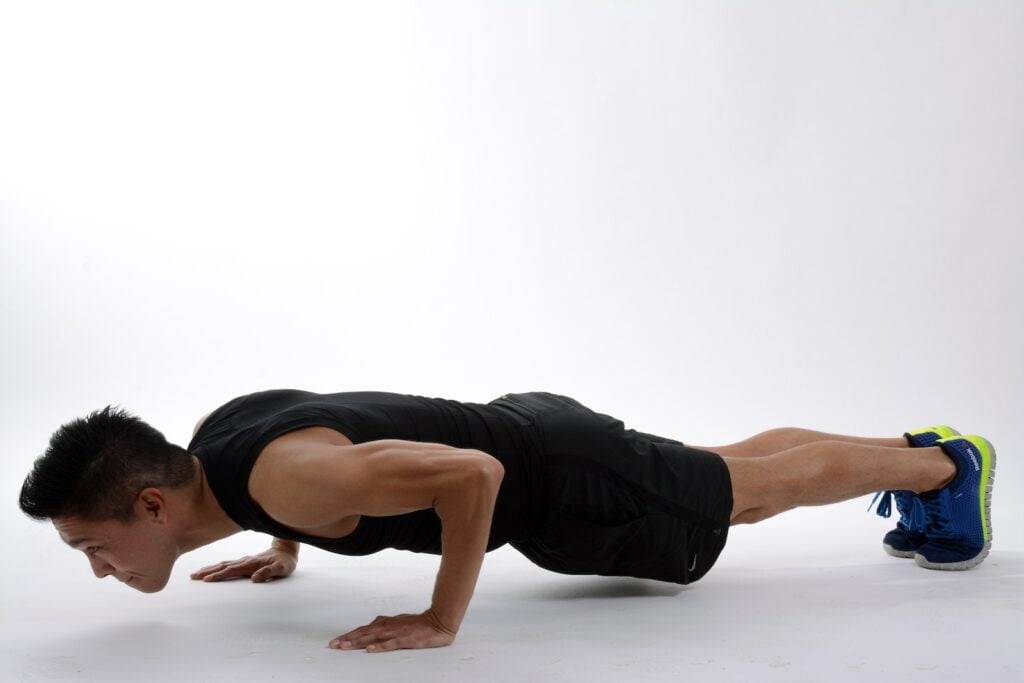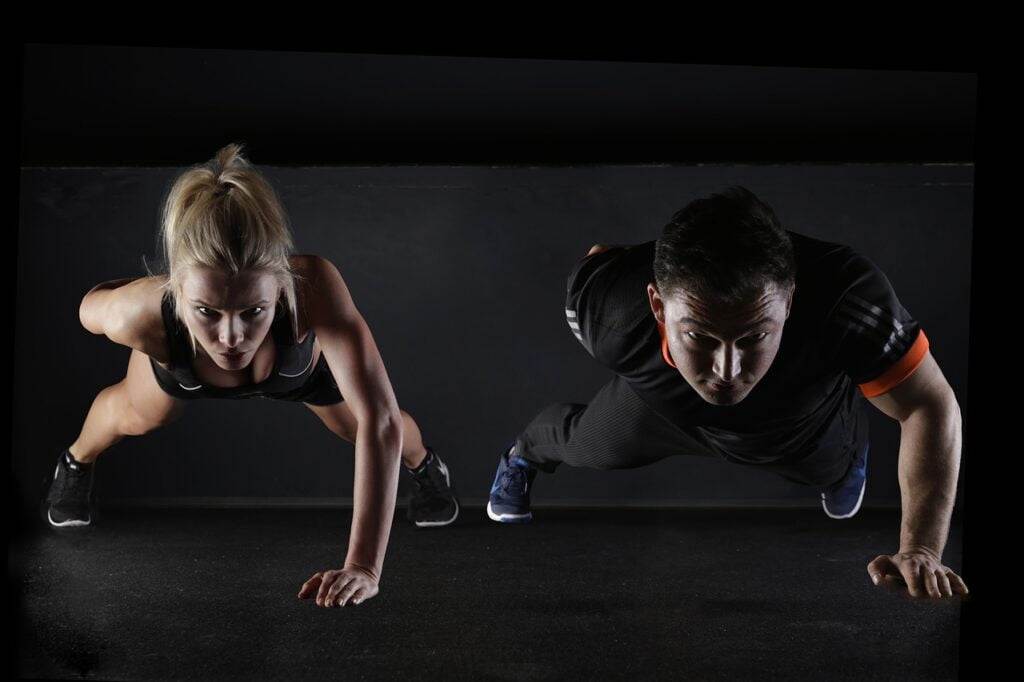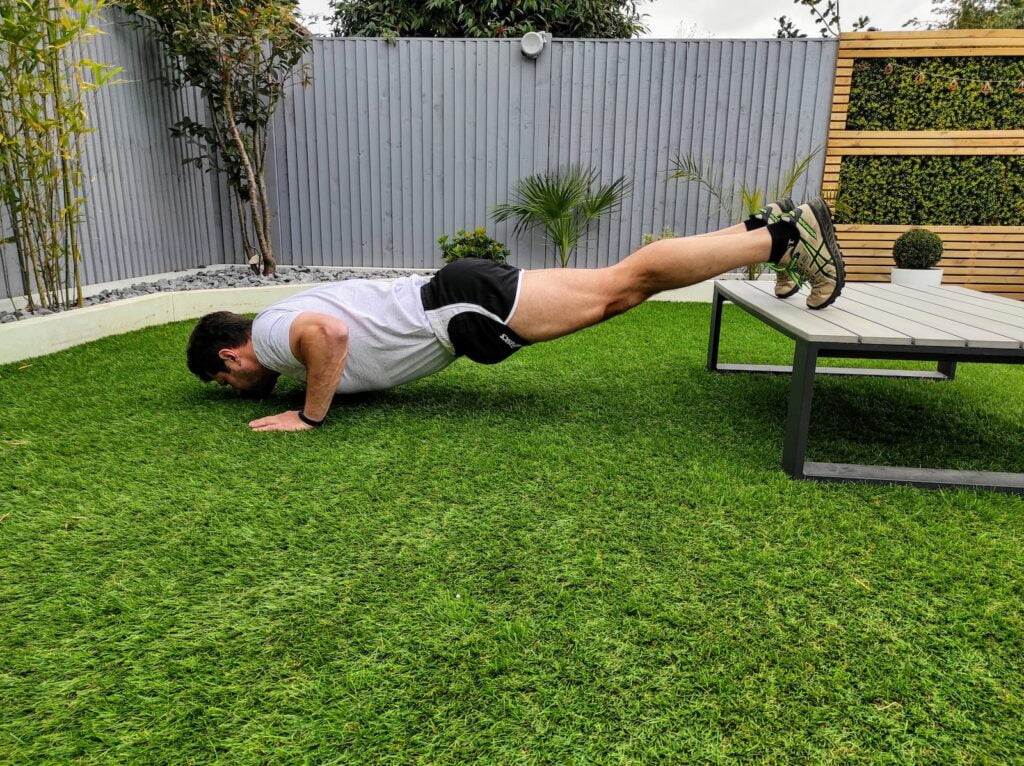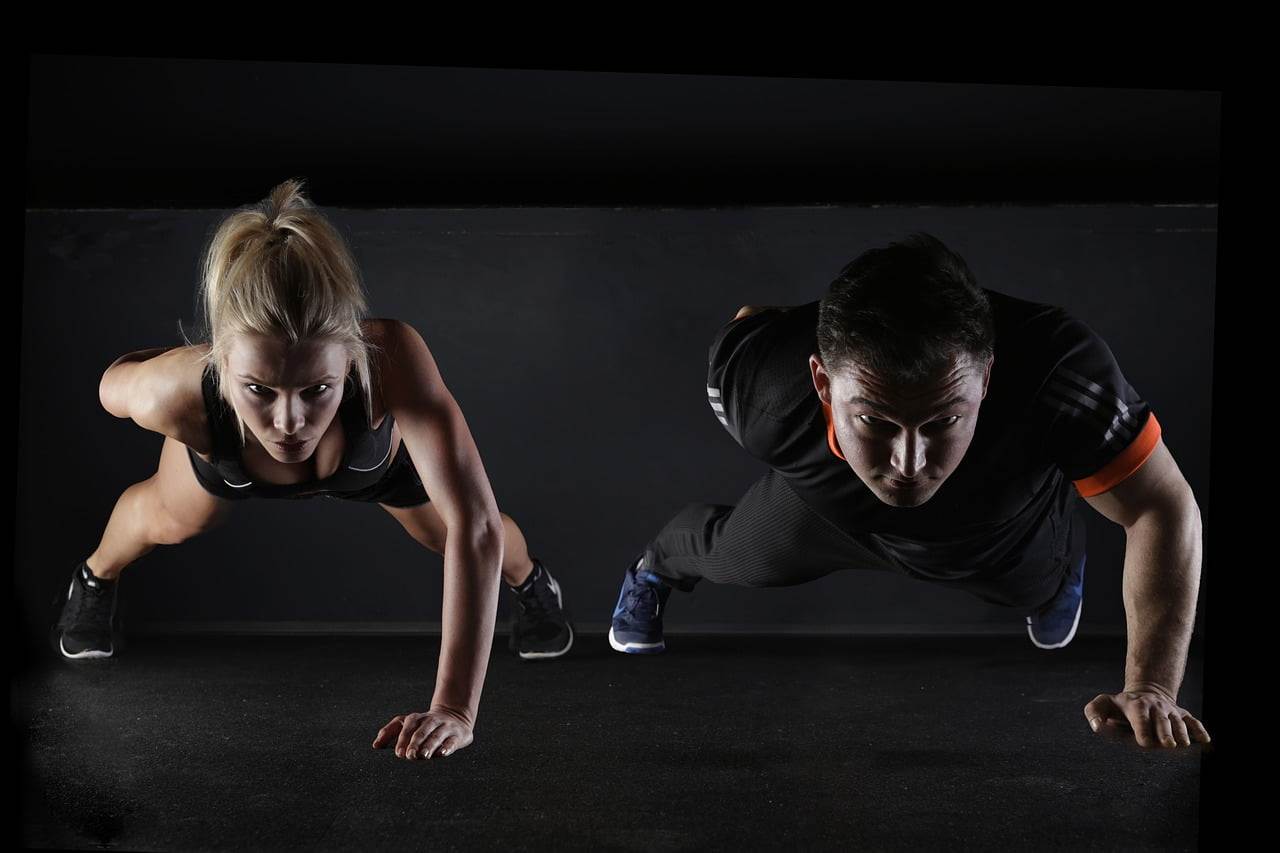In order to increase one’s upper body strength and stamina, push-up are an excellent choice of exercise. There are many advanced push-up variations to target different muscles and add some variety to your training.
Table of Contents
The need for Push-up Variations
Push-ups are great for building muscle, but doing them every day may get boring and not challenge you enough. Push-ups are a wonderful all-around exercise that can be tweaked to work different muscle groups and keep sessions interesting.
This post covers 10 upper body-building push up variations.
1. Standard Push-up
The standard push-up is is the most popular and fundamental form of the exercise. It’s a full-body workout that emphasizes the chest, shoulders, triceps, and abdominals.
Benefits:
- Targets multiple muscle groups, including the chest, shoulders, triceps, and abs.
- Easy to perform, making it a great exercise for beginners.
Risks:
- Incorrect form can lead to shoulder and lower back pain.
- People with wrist pain may find it difficult to perform the exercise correctly.
Follow these steps:
- Get into a high plank position with your hands shoulder-width apart and your feet hip-width apart.
- Lower your body until your chest touches the floor.
- Push back up to the starting position.

2. Wide Grip Push-up
The wide grip push-up is a variation of the standard push-up. When performed with a wider grip, the push-up shifts the emphasis from the triceps to the chest.
Follow these steps:
- Get into a high plank position with your hands placed wider than shoulder-width apart.
- Lower your body until your chest almost touches the floor.
- Push back up to the starting position.
Benefits:
- Shifts the emphasis from the triceps to the chest, making it a great exercise for building chest strength.
- Easy to perform and modify for different fitness levels
Risks:
- Incorrect form can lead to shoulder and lower back pain.
- People with wrist pain may find it difficult to perform the exercise correctly.
3. Diamond Push-up
The diamond push-up is a variation that targets the triceps more than the chest. Triceps are used more than chest muscles in the diamond push-up version.
Follow these steps:
- Get into a high plank position with your hands close together, forming a diamond shape with your fingers.
- Lower your body until your chest almost touches your hands.
- Push back up to the starting position.
Benefits:
- Targets the triceps more effectively than other push-up variations.
- Helps build upper arm strength.
Risks:
- Incorrect form can lead to shoulder and lower back pain.
- People with wrist pain may find it difficult to perform the exercise correctly.

4. One Arm Push-up
The one-arm push-up is a difficult version that strengthens the chest, shoulders, and triceps.
Follow these steps:
- Get into a high plank position with your feet wider than shoulder-width apart for stability.
- Shift your weight to one arm and lower your body until your chest almost touches the floor.
- Push back up to the starting position.
Benefits:
- Builds strength in the chest and arms.
- Improves overall stability and balance.
Risks:
- This is a difficult variation that requires a high level of upper body strength.
- Incorrect form can lead to shoulder and back pain.
5. Clap Push-up
The clap push-up is an explosive variation that targets the chest, shoulders, and triceps.
Follow these steps:
- Get into a high plank position.
- Lower your body and then push up explosively, lifting your hands off the floor and clapping them together before landing back in the starting position.
Benefits:
- Builds explosive power in the chest and arms.
- Improves overall upper body strength.
Risks:
- Incorrect form can lead to shoulder and back pain.
- This is a more advanced variation that requires a high level of upper body strength.

6. Feet Elevated Push-up
The feet elevated push-up is a variation that targets the upper chest muscles. Those looking to strengthen their upper chest should try out the feet-elevated push-up.
Follow these steps:
- Get into a high plank position with your feet elevated on a bench or step.
- Lower your body until your chest almost touches the floor.
- Push back up to the starting position.
Benefits:
- Targets the chest and abs more effectively than other push-up variations.
- Improves overall upper body strength.
Risks:
- Incorrect form can lead to shoulder and back pain.
- This is a more advanced variation that requires a high level of upper body strength.
7. Staggered Push-up
The chest, shoulders, and triceps are all strengthened by the staggered push-up version.
Follow these steps:
- Get into a high plank position with one hand placed slightly higher than the other.
- Lower your body until your chest almost touches the floor.
- Push back up to the starting position.
- Switch hand positions and repeat.
Benefits:
- Targets the chest, triceps, and abs.
- Improves overall upper body strength and stability.
Risks:
- Incorrect form can lead to shoulder and back pain.
- This is a more advanced variation that requires a high level of upper body strength.
8. T Push-up
In addition to strengthening your chest, shoulders, and triceps, the T push-up also engages your core muscles.
Follow these steps:
- Get into a high plank position.
- Lower your body until your chest almost touches the floor.
- Push back up to the starting position.
- Lift one arm off the ground and rotate your body to the side, extending your arm straight up towards the ceiling to form a T-shape with your body.
- Hold for a few seconds, then return to the starting position.
- Repeat on the other side.
Benefits:
- Targets the chest, triceps, and obliques.
- Improves overall upper body strength and stability.
Risks:
- Incorrect form can lead to shoulder and back pain.
- This is a more advanced variation that requires a high level of upper body strength.
9. Plyometric Push-up
The plyometric push-up is a variation that targets the chest, shoulders, and triceps.
Follow these steps:
- Get into a high plank position.
- Lower your body until your chest almost touches the floor.
- Push back up explosively, using enough force to lift your hands off the ground.
- Land back in the starting position.
Benefits:
- Builds explosive power in the chest and arms.
- Improves overall upper body strength.
Risks:
- Incorrect form can lead to shoulder and back pain.
- This is a more advanced variation that requires a high level of upper body strength.
10. Spiderman Push-up
The chest, shoulders, triceps, and obliques are all worked on in the spiderman push-up version.
Follow these steps:
- Get into a high plank position.
- Lower your body until your chest almost touches the floor.
- As you push back up, bring one knee towards your elbow on the same side of your body.
- Return to the starting position and repeat on the other side.
Benefits:
- Targets the chest, triceps, and obliques.
- Improves overall upper body strength and stability.
Risks:
- Incorrect form can lead to shoulder and back pain.
- This is a more advanced variation that requires a high level of upper body strength and coordination.
Check out the article “10 Pushup Variations That Will Boost Your Workout” from Men’s Health
Conclusion
These 10 push-up variations can target different muscle groups, diversify your exercise, and challenge your muscles. Start with the standard push-up then proceed to harder ones as your strength and endurance develop. Maintain proper form and take breaks as needed to prevent injury.
FAQs
Q. What is the best push up variation?
Individual fitness goals and fitness level determine the ideal push-up variety. Some common push-up variations and their benefits are:
Standard Push-up: Works the chest, shoulders, triceps, and stomach.
Diamond Push-up: The diamond push-up is best for triceps.
One-Arm Push-up: The one-arm push-up strengthens the chest, arms, and balance.
Clap Push-up: Builds powerful chest and arm power.
Feet-Elevated Push-up: This push-up version works the chest and abdominal better.
The ideal push-up variation is one you can do properly, challenges you, and helps you attain your fitness goals. Consult a personal trainer or physical therapist to guarantee proper form and safety.
Q. What is the hardest push up variation?
Fitness, strength, and skill determine the hardest push-up version. These push-up versions are harder:
One-Arm Push-up: This challenging version requires upper body strength and stability.
Clap Push-up: This tough version requires explosive chest and arm force.
Feet Raised Push-up: This advanced form needs strong upper body strength.
T Push-up: The T push-up challenges the chest, triceps, and obliques.
Plyometric Push-up: This difficult variation requires powerful upper body strength.
These are some difficult push-up variations. Remember that the hardest push-up variation depends on fitness level. Start with easier exercises then progress to harder ones.
Q. Which push up variation is best for abs?
Push-up variants can strengthen the abs.
Samples:
Feet Elevated Push-up: This workout targets the abdominal, strengthening them.
Spiderman Push-up: This exercise engages the core by bringing one leg to the elbow during the downward phase.
T Push-up: Rotating the torso while pushing up engages the obliques and abdominal.
Plyometric Push-up: Jumping up from a push-up trains the abs and boosts power and explosiveness.
Push-ups aren’t the only way to work the abs. Crunches, planks, and Russian twists can also build abs.
Q. Which pushup works the most muscles?
Push-ups strengthen the chest, shoulders, triceps, abdomen, and lower back. Yet, some push-up varieties target specific muscle groups better.
Push-ups work the chest, shoulders, triceps, and abs. This push-up variation is a terrific multi-muscle exercise.
Plyometric push-ups work the abs and boost power and explosiveness by springing up from the push-up posture. This variant works the chest, shoulders, triceps, and lower back.
T push-ups engage the obliques and abs by rotating the torso. This variation targets the chest, shoulders, triceps, and lower back.
In conclusion, all push-up varieties activate various muscle areas, although some may target certain muscle groups better. Choose a push-up variation that fits your fitness objectives and challenges you.



